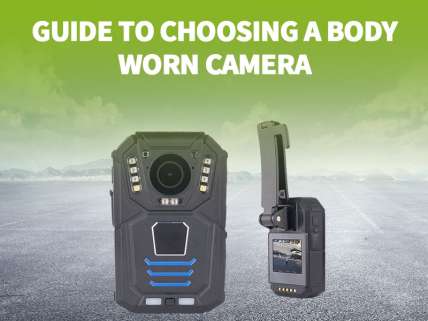Guide to Choosing a Body Worn Camera
In modern law enforcement work, body-worn cameras have become an indispensable tool. They not only provide objective evidence but also contribute to maintaining fairness and transparency. However, faced with numerous brands and models of body-worn cameras in the market, choosing a device that suits one’s job requirements can be overwhelming. To assist you in making an informed decision, here is a guide on choosing a body-worn camera.
Introduction
The application of body-worn cameras in law enforcement has become a prevalent trend. By documenting law enforcement activities, this device provides officers with a powerful means to protect themselves while also enhancing the transparency of their work.
1. Consideration of crucial features
Choosing a body-worn camera with robust storage and data management capabilities is equally crucial. Internal storage and external options, cloud storage, as well as data encryption and security features, all need to be carefully considered.
3. Durability and design
Given the often complex and challenging work environments of law enforcement personnel, the durability and design of the equipment are particularly crucial. Choosing a body-worn camera that is impact-resistant, waterproof, dustproof, and designed robustly ensures reliable operation in various circumstances.
4. Ease of Use
A body-worn camera that is easy to use can enhance the efficiency of law enforcement personnel. Ensure that the device has an intuitive user interface and controls, as well as good compatibility with existing systems. Additionally, consider the simplicity of the training process.
5. Connectivity options
Modern law enforcement work demands devices with advanced connectivity options. Wireless features such as Wi-Fi and Bluetooth, compatibility with smartphones or other devices, and remote access and control functionalities are all factors that contribute to a more convenient workflow.
6. Budget considerations
When selecting a body-worn camera, budget is also a crucial factor to consider. It’s essential to strike a balance between the initial equipment cost and long-term maintenance expenses, ensuring a good equilibrium between quality and affordability.
7. Legal and compliance considerations
With the widespread adoption of body-worn cameras, issues related to legality and compliance have become increasingly crucial. Ensure that the chosen equipment complies with local laws and regulations while also addressing privacy concerns and incorporating deletion functionalities to mitigate potential legal issues.
8. Brand reputation and reviews
Lastly, ensure that the selected body-worn camera brand offers excellent customer support and a reasonable warranty policy. Understanding the device’s upgrade options and software support is essential to guarantee the stability of the equipment during use.
Conclusion
When selecting a body-worn camera, considering the above factors in a comprehensive manner is crucial. A body-worn camera that suits your work requirements, excels in performance, and is easy to use will become an indispensable tool in law enforcement. If you are looking for a reliable supplier of body-worn cameras, Luview is your ideal choice. Please contact [email protected] for more details to ensure your law enforcement work is in capable hands.



